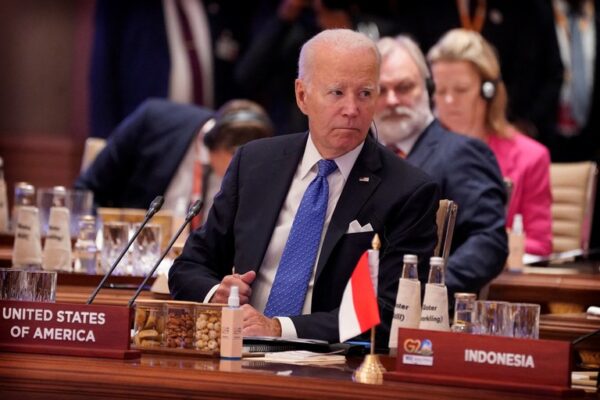Climate change is having an impact on the ancient art of tea-growing, as a long dry spell has left high-end crops across the region parched and yellow amid dwindling supply, according to agricultural experts and tea connoisseurs. China’s traditional tea-making techniques and customs were included in UNESCO’s intangible cultural heritage list last year — at a time when the perfect cup of tea is getting harder and harder to find. The 8th century “Classic of Tea” by Lu Yu tells growers: “Make tea by looking at the weather. Make tea by looking at the tea.” Yet extreme weather that swings between drought and floods is creating hardships for the region’s tea-growers, who have a similar appreciation for the different kinds of leaf and the environments in which they’re grown to connoisseurs of fine wines. “Last year we had very dry weather, and so this year’s Longjing [Dragon’s Well] tea crop has been severely reduced,” Chinese tea expert Zhang Qin told Radio Free Asia’s Green Intelligence column. She blamed the lower yields on a lack of water supplied to the tea-growing areas around Xihu in the eastern Chinese city of Hangzhou. “It’s mainly because some of the tea-bushes have seen damage to their roots, and a small number of bushes have died,” Zhang said. Water evaporates Similar woes have beset tea-growing regions of China’s southeastern province of Fujian, according to Tsai Yu-hsin of the 186-year-old Taiwanese tea company Legacy Formosa, who said he had seen the effects with his own eyes. “When there are such high temperatures and drought, all the water in the tea bushes evaporates,” Tsai said. “If there’s a wind, then even more water is lost, so the tea bushes will turn yellow.” “Water is as important to tea-bushes as it is to humans,” Tsai said. “The tighter the water supply, the worse the disaster for the tea gardens.” A woman plucks tea leaves in Moganshan, Zhejiang province. Extreme weather, such as drought or heavy rainfall, is detrimental to the growth of tea trees, causing tea buds to germinate slowly and become smaller Credit: Carlos Barria/Reuters Tsai said he had seen leaves grown for the Wu Yi Rock Tea variety and white tea start to wither and turn yellow on the bush. He said similar problems have been seen in tea-growing areas of Taiwan’s Nantou, across the Taiwan Strait from Fujian. Plunging yields Tea yields in China, the world’s biggest producer of tea, and Taiwan, which serves a smaller but highly discerning tea-drinking public, saw the lowest levels of rainfall in 30 years last year. Overall tea production in China looks set to fall by around 15% this year as a result, according to industry associations, with falls of 40% in the central province of Henan, and of 30% in Fujian. In Taiwan, yields are down in the Chiayi tea-growing region by more than 50%, with other areas seeing falls of 20 to 30%, according to Chiu Chui-fung, a Ministry of Agriculture official who works on improving tea yields. And drought doesn’t just affect the amount of tea that can be harvested — it changes the quality of the tea that is available, he said. Drought-struck bushes will bear leaves with less sugars, polyphenols, amino acids and caffeine, which affects the taste and smell, Chiu said. Health-giving catechins are also reduced by around 50% in times of drought, according to a flavor study by researchers at Montana State University. Tea bushes like temperatures ranging between 18 and 25 Celsius, with annual rainfall of 1800-3000 mm, and a relative humidity of 75-80%, according to Chiu. Students learn how to hand-roll tea at a training workshop at the Tea Research and Extension Station in Nantou, Taiwan. Drought followed by torrential rains have decimated tea crops. Extreme weather exacerbated by climate change has left Taiwan’s tea farmers scrambling to adapt. Credit: Ann Wang/Reuters Rising temperatures While harvesting takes place several times a year, the spring harvest yields the most, he said. There are signs that fewer and fewer regions are now meeting all of those criteria, according to Zhang Qin. “Tea farmers in Yunnan [in the Mekong River basin] are saying that temperatures are getting higher and higher every year in recent years,” she said. And specialized teas like White Silver Needle Orange Pekoe or Oolong Rock Tea are more sensitive to changes in the environment than cheaper teas for daily consumption. “Without enough water, Silver Needle Pekoe won’t be able to open its leaves, and the quantity will decrease,” Tsai said. “Climate change is damaging a lot of tea bushes, and fewer of the most refined and high-quality leaves are being harvested, which means the price will be significantly [higher].” The EU-funded climate monitoring agency “Copernicus Climate Change Service” announced in August that July 2023 was the hottest month on Earth on record. Last month, China’s Climate Change Blue Book for 2023 showed an average temperature increase of 0.16C every 10 years between 1901 and 2022. The Meteorological Administration also reported record-breaking high temperatures at 366 weather stations around the country during 2022. Weather extremes Taiwan has seen similar increases over the past century, too. And record-breaking heavy rains dumped by increasingly frequent and powerful typhoons and rainstorms may not help tea-growers much. Too much rain means the soil is waterlogged, cutting off the supply of oxygen in the soil, and affecting respiration and absorption, Chiu said. The result is slower-growing tea and declining yields and quality. Extreme weather also means more pests that threaten tea crops, including red spider-mites, thrips and other insects. Zhang, who receives samples of tea from growers across the region every year, says there are already noticeable changes in the way the best teas taste. There is a black tea from Yunnan called Golden Silk Dianhong with “slight caramel and floral aroma, with a rich taste,” Zhang said. “It has always been very popular with consumers, but it doesn’t taste the way it once did when I have drunk it in recent years.” Elusive…





